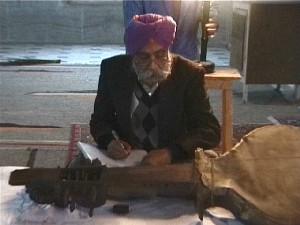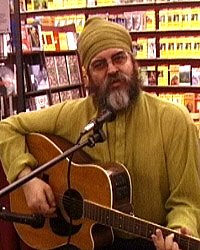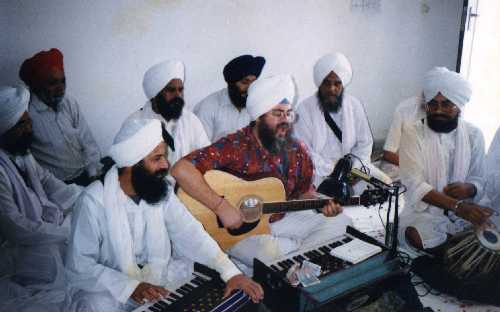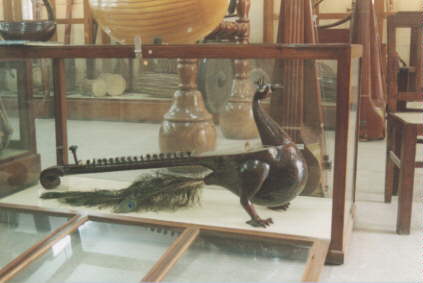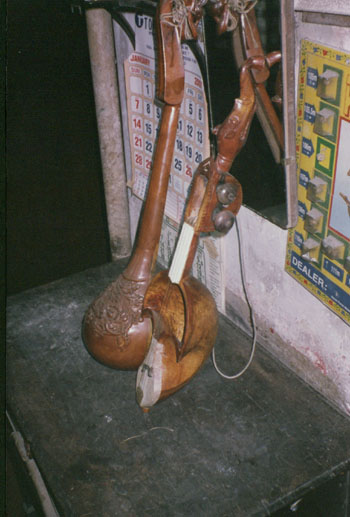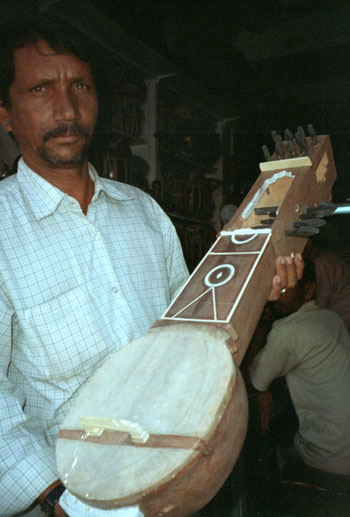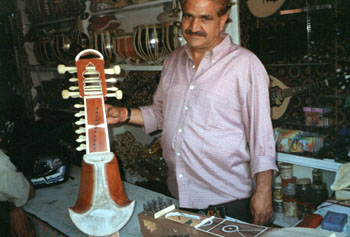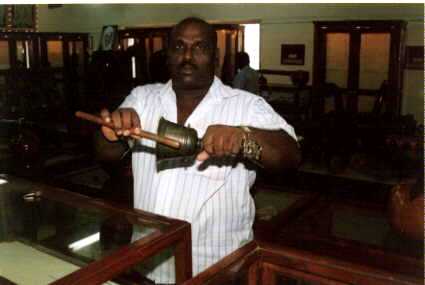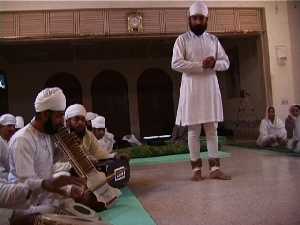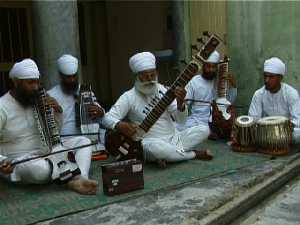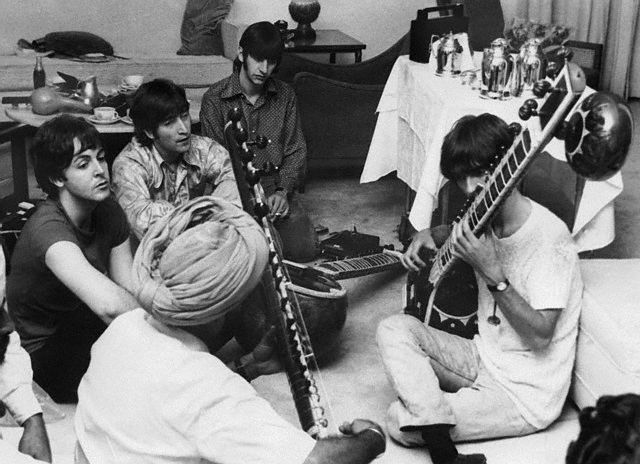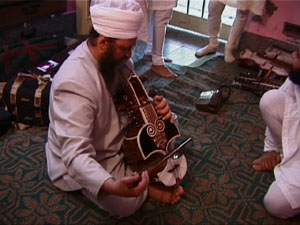
Traditional Sikh Musical Instruments
Siranda - Taus - Dilruba - Esraj

Siranda
The siranda is a bowed instrument played by Guru Arjan Dev.
Paired with rabab, its low pitch is highly suitable for experiencing the state of simran.
It originates from Central Asia.
It has open sound holes and a skin front. Its back is shaped like an egg.
Taus - the 'Peacock Sitar'
Taus means ‘peacock’ in Persian and is derived from sitar and sarangi.
The taus was probably introduced into kirtan in the mid-19th century.
It’s body is shaped like a peacock and played with a bow.
It has a sound hole at the ‘tail’ portion of the instrument and stands on bird-feet carved in wood.
Dilruba
The dilruba is traditionally a smaller instrument than the taus.
It may have been favoured in 20th Century kirtan due to its portability and manageability.
It also employs the same playing technique as taus, running the fingers along the top of the strings, but the instrument has its own unique sound, which many associate with the feeling of ‘bhairag rasa’ or spiritual detachment.
Esraj
This instrument, although smaller, is round-based and round-backed, similar to the dilruba.
It has a sharply indented waist on its front side covered by goat-skin where the bow plays.
It has the same system of four main strings and tarab strings as the taus and dilruba.
The 19th Century Bengali musicologist S. M. Tagore says the instrument gained great popularity and refers to it as a ‘very recent instrument’.
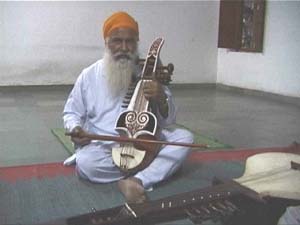 | 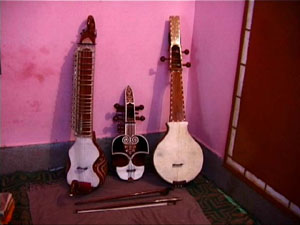 |
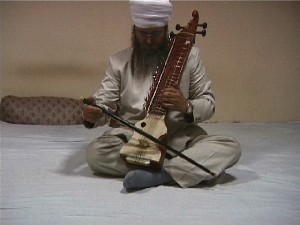 | 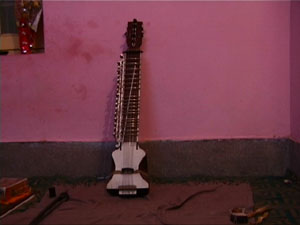 |
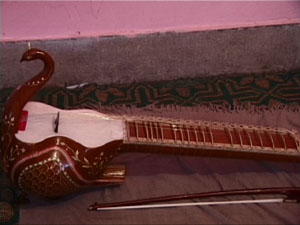 | 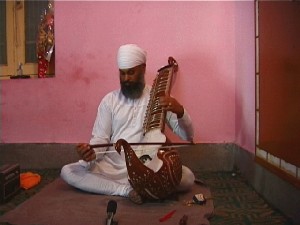 |
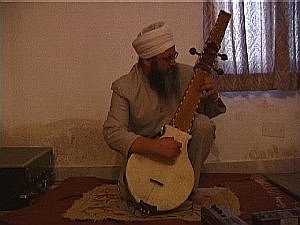 | 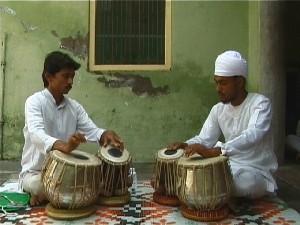 |
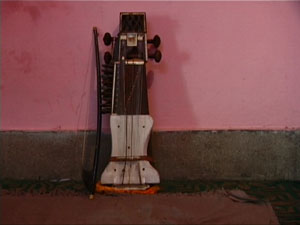 | 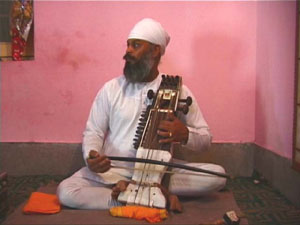 |

